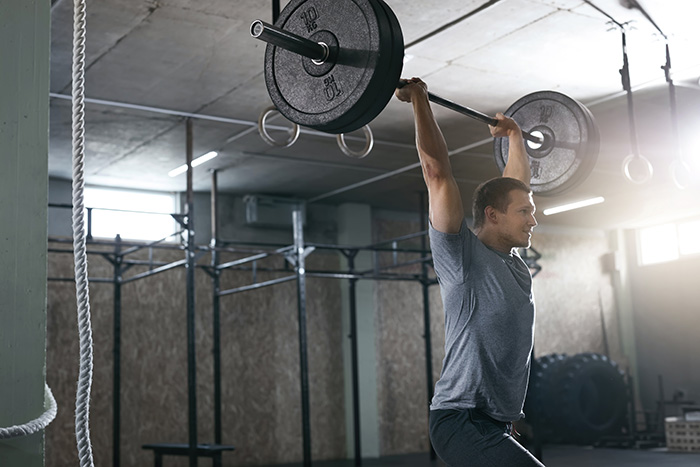The best rep ranges for building muscle size and strength
Here’s how different rep ranges influence your muscle-building and fat-burning results so you can select the best rep range to build the body you want, says New Body Plan’s Joe Warner
In the cult classic movie Anchorman, when Will Ferrell’s Ron Burgundy says he can barely lift his right arm because he’s done so many dumbbell biceps curls – “I don’t know if you heard me counting… I did over a thousand” – his attempt to impress Christina Applegate’s Veronica Corningstone falls well short. And not only because it serves to show his complete lack of weight-training knowledge.
Counting to a thousand is an impressive display of concentration. But it’s a less than impressive way to build bigger muscles. To do that you need to lift a weight a certain number of times. Too few and you won’t work the muscles hard enough to initiate a muscle-building response. Too many and you’ll build muscle endurance, not muscle size.
So what is the ideal number of reps per set for faster hypertrophy, which is the technically name for increasing the size of your muscles? We’ll get to that in a minute, but first we need a quick overview of the different elements, better known as training variables, that come together to form a workout session.
The best rep ranges for muscle
The seven key weight-lifting variables are: exercises; exercise order; sets; reps; weight; tempo; and rest. All are important and have a role to play in you building a bigger and leaner body. But reps are the most significant because the number of reps you want to perform per set will affect all the other training variables.
For instance, your target number of reps per set has a huge influence on your weight selection. Why? Because too heavy a weight means you won’t be able to do all the reps, or at the required tempo. And too light a weight means you’ll finish the set with plenty left in the tank.
Rep is short for repetition, and is the completion of a given exercise through its entire range of motion from the start (or top) position to the end (or bottom) position and back to the start again.
As a general rule, lower rep-sets (less than five) done with heavy weights build strength or power, while rep-counts in the eight to 12 range are geared towards building muscle.
Sets with more than 12 reps, or those that you perform “to failure” (which indicates you do as many reps as you can before your form breaks down, or your muscles reach complete fatigue) improve muscular endurance. They can also have a role to play in muscle building because they tax a lot of muscle fibres that must be repaired and rebuilt bigger and stronger.
Here’s a look at each of the main rep ranges and their training effect so you can train smarter.
1 to 5 reps
Training aim: Increasing muscle strength and power
Weight used: 85-100% of your one-rep max for the lift
Muscle response: Low-rep sets of heavy weights build strength and power because they recruit and fatigue your fast-twitch muscles fibres, which are responsible for your muscles’ explosiveness. This rep range also improves the communication pathway between your brain and muscles, which helps them contract faster and with more force to make them stronger and more powerful.
6-7 reps
Training aim: Optimal compromise between increasing muscle strength and size
Weight used: 75-85% of your one-rep max
Muscle response: Sets in this rep range will still work your fast-twitch muscle fibres and improve the mind-to-muscle communication connection, but performing more reps will also fatigue more muscle fibres more thoroughly to result in improvements in both size and strength.
8 to 12 reps
Training aim: Increasing muscle size and improved strength
Weight used: 65-75% of your one-rep max
Muscle response: The most effective approach to build lean muscle is for each set to last between 40 and 70 seconds, and sets in this rep range – when done using a controlled tempo – will allow you to hit this time target with a weight that is heavy enough to fatigue the muscles thoroughly, but not so heavy that you can’t do all the reps, or maintain correct form.
13 or more reps
Training aim: Increasing muscle endurance and improved size
Weight used: 60-65% of your one-rep max
Muscle response: Using lighter weights combined with a high rep range recruits and fatigues your slow-twitch muscle fibres, which are primarily responsible for muscular endurance. Sets in this rep range also improve the ability of these fibres to deal with a build-up of lactic acid and other waste products that accumulate during lifting, which are responsible for that “muscle burn” feeling. These sets also drive a lot of blood into the muscle, making it swell up and cause a muscle “pump”, so also have a role in increasing muscular size.
Find your perfect fat-loss plan!
Take the New Body quiz!
Burn fat and lose your belly with the best cardio for weight loss

